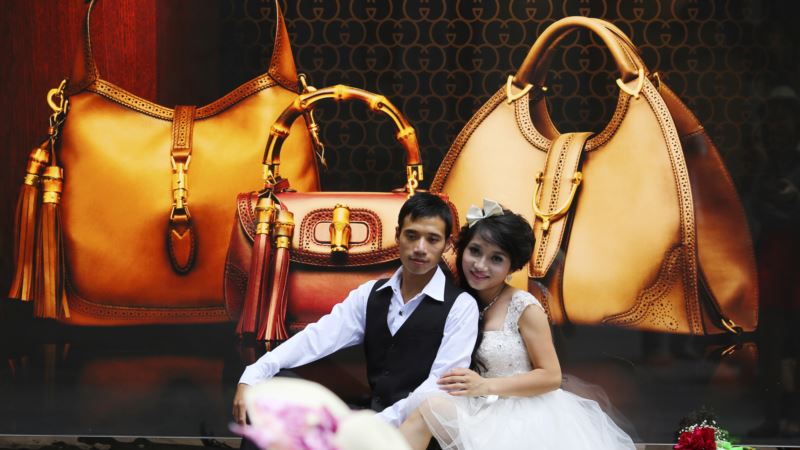Vietnam’s middle class is growing faster than anywhere in Southeast Asia as strength in export manufacturing creates jobs and raises wages. The newfound purchasing power has sparked an explosion in conspicuous consumption in the cities and in competition for market share among foreign brands. Vietnam’s “middle and affluent class” is projected to double to 33 million people, about a third of the country, from 2014 to 2020 according to the Boston Consulting Group Center for Consumer and Customer Insight. It groups people earning $714 or more a month in that class. In 1987 the Southeast Asian country opened its markets to foreign direct investment. It has increased its appeal since 2012 by solving labor unrest and currency devaluation issues, joining the Trans Pacific Partnership trade bloc and signing another trade deal with Europe. Export manufacturers favor Vietnam for its low operating costs. Foreign factories have created a spinoff economy, including suppliers, logistics and financial services, in turn creating even more jobs. Vietnam raises its minimum wages regularly and workers often live with family to save on rent. Some employers report difficulty finding skilled white-collar workers, commanding higher wages for those who can perform. And unlike other emerging Asian countries, government investment in agricultural development has spawned a rural middle class, said Aparna Bharadwaj, a Boston Consulting Group principal who covers Southeast Asia. “That allows for the middle class to not be just confined to metros and large cities but to disperse very rapidly to smaller towns and rural markets,” Bharadwaj said. “Vietnam is seeing the fastest dispersion of middle class that I have seen across ASEAN markets. People are getting up in income level in a more spread out manner than just focused on a few rich people getting richer.” Vietnam’s average per capita income will rise from $1,400 two years ago to $3,400 by 2020, the consultancy said. In the nation’s financial center of Ho Chi Minh City, traffic jams have increased in the office and entertainment district. Vehicles include luxury brand black sedans as well as motorcycles by Honda and Yamaha – status brands for Vietnamese. Restaurants serving foreign cuisine, which is more expensive than local food, fill at night with raucous groups of people flashing mobile phones by Apple and Samsung. So status conscious are some consumers that they might scrimp on furnishings and spend lavishly on more conspicuous items. “If you go inside a Vietnamese house, they might not have a lot of things,” said Oscar Mussons, international business advisory associate with the Dezan Shira & Associates consultancy in Ho Chi Minh City. “They would probably eat on the floor, but still they would have a mobile phone or a motorbike because this is what they see they can show from the outside,” he said. “It’s not just about being middle class but also about showing they’re middle class and that they have power to purchase things.” Tam Nguyen, a 36-year-old Ho Chi Minh City office worker, has seen her salary go up more than 10 percent after two years on the job. She normally gets food from supermarkets to make herself, but eats out with family on weekends and spent $5,000 on a trip for four to Japan. “I like to spend money on traveling and tourism, to go somewhere as much as possible in Vietnam and overseas as much as possible,” Nguyen said. She decided to save leftover income for a property purchase in the next five years because “of course when you have money you think more about it.” Growth in Vietnam’s middle class has grabbed the attention of foreign vendors, which compete heavily in fast food, dairy products, motor vehicles, hygiene and consumer electronics. Brand names seen frequently in Ho Chi Minh City include Burger King, Starbucks, Family Mart, Nestle and Sony. To gain market share in Vietnam, she said, foreign firms should sell whatever “value” their products can offer the Vietnamese family. U.S.-based computer vendor Dell found Vietnam “unique” because consumers in the north show a preference for European brands, while those in the south favor American and Japanese brands, said Cuong Thinh Nguyen, a business development manager in the country. Dell now highlights after-sales service to build “trust” in the products, the manager said.
Conspicuous Consumption Emerges in Vietnam as Middle Class Grows






